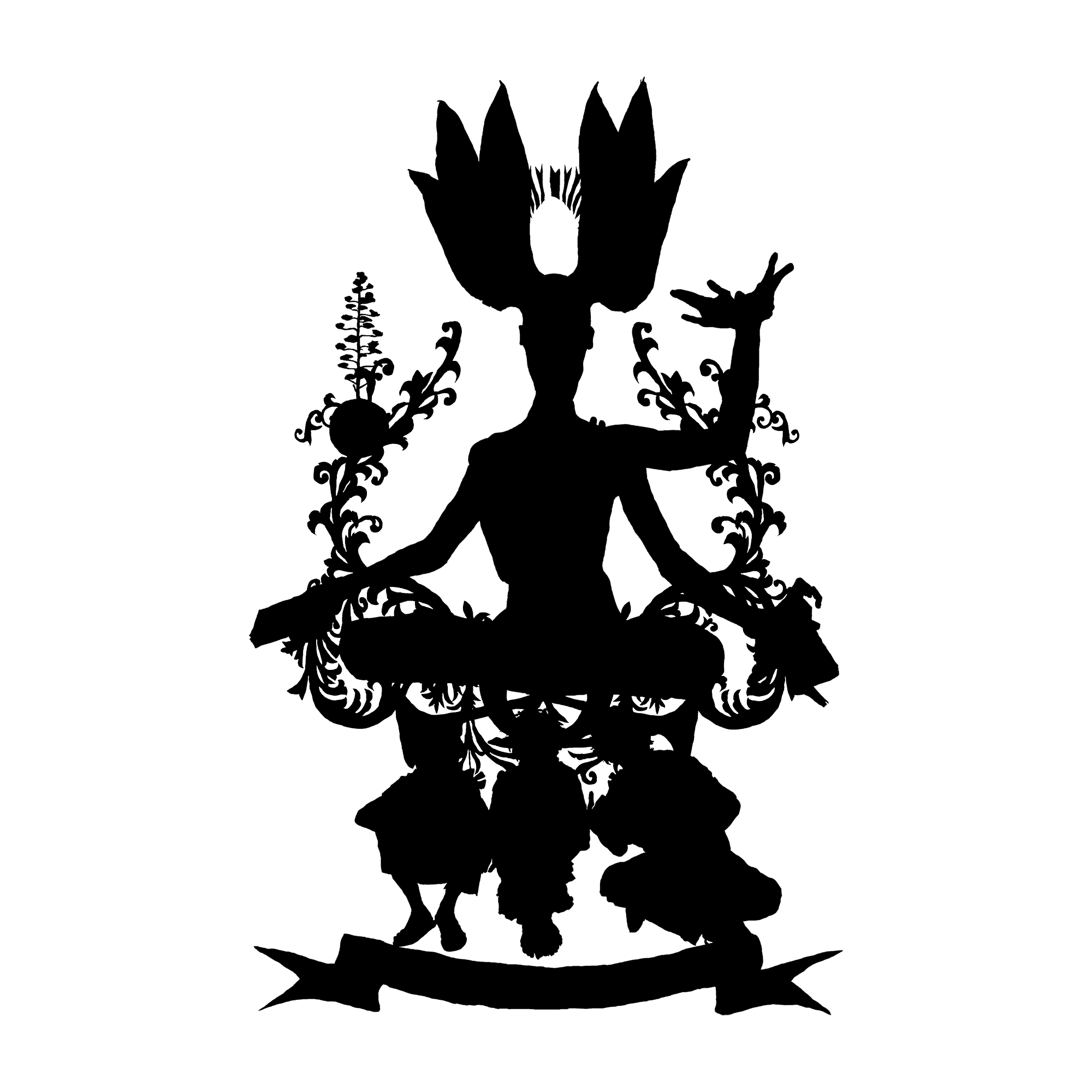C. M. Kosemen
Artist and Researcher
***
A world of parareptiles
This article is a fun exercise aimed at developing realistic concepts for use in scenarios involving speculative evolution.
I propose that, instead of rigorously deriving forms on a species-by-species basis, creators can adopt a looser approach that explores distant clades and divergent adaptations. One only needs to keep a few “brass tacks” characters; such as numbers of digits, spine shape, overall skull morphology, etc. intact. Beyond that (but within reason), anything goes. While seemingly less “scientific”; concepts derived by this method seem, strangely, more realistic, and more similar to patterns observed in real-life evolution.
The following is a test of this approach on a clade of “parareptiles”, lizard-like animals. The term “reptile” is an extremely generic definition that includes the ancestors of mammals, birds and many other forms. The evolution of “parareptiles” can therefore go anywhere; producing tangential forms that resemble permutations of birds, mammals and other clades.

These are the variations I began with. I simply sketched out a reptile-like face repeatedly, exaggerating different parts of anatomy with each iteration. I picked a face at random, endowed it with a body and commenced the experiment.
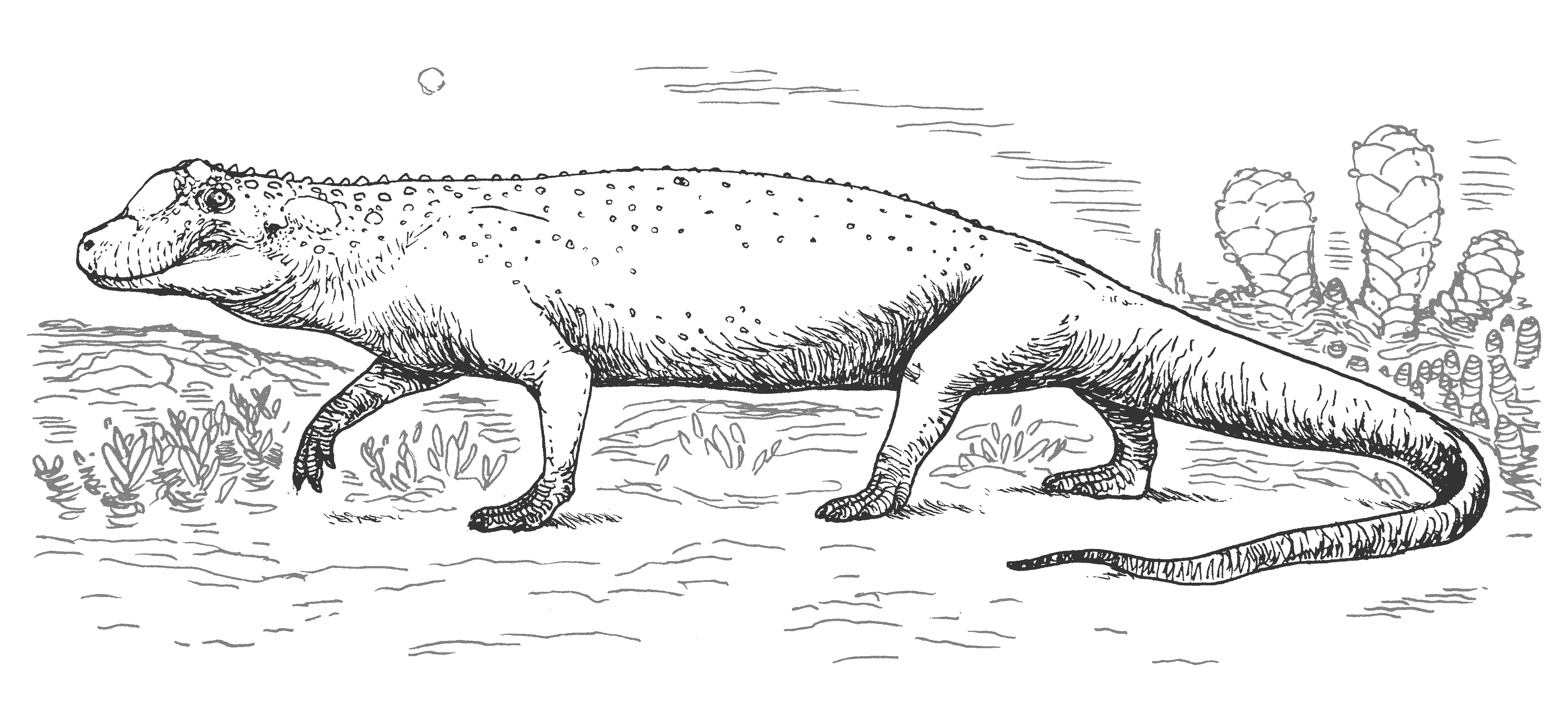
This was Eoparasaurus sp., the parareptile ancestor; a simple, lizard-like animal with pneumatic adaptations in its skull and body. Diverging from our timeline’s ‘regular’ reptile stock somewhere between the Carboniferous or the Permian periods, this animal was the ancestor of every other parareptile form in this experiment. Like many successful prime ancestors, it lived as a generalist; feeding alternately on plants and small animals depending on the opportunity. Soon the parareptiles diversified into numerous forms; stocky burrowers, long-bodied semiaquatic forms, long-legged climbers, and so on…

The Earth suffered a catastrophic mass extinction at the end of the Permian period. The parareptiles were lucky, and survived. In the freshly vacant world of the Triassic, they diversified into numerous unusual species. One was Semaphorapterus macrorhynchus, a flagger creature that used its legs, long beak and prehensile tail to climb trees. Its pale-blue forelegs were completely useless in movement, and worked as a set of semaphore signals to members of its flock on nearby branches. Such social lifestyles gave these bird-like parareptiles an edge in survival and species diversity.

Extraordinary specialisations followed adaptive radiations such as the one that took place among the parareptiles after the Permian extinction. An extremely derived group reverted to the cold-blooded metabolism of their lizard-like ancestors while keeping a covering of scale-like, regressed quasi-feathers. From them developed the bizarre, treesnake-like Dactylognathus rictus, the bird-headed serpent, specialized to hunt flagger creatures and related small, climbing parareptiles. The snake-like appearance of these animals was superficial. Beneath their rigid bodies they had lengthened vertebra, comparatively few in number; as opposed to the multitude of short vertebra sported by snakes on our timeline. Their movements were slow and pantomime-like, except when attacking their prey; which was with lightning-like speed and a deadly certainty. The bird-headed serpents had no venom – they simply held onto their prey and squeezed the life out of them. Their jaws had specialised, forceps-like bone architecture and long, piercing teeth to grip their small-bodied, sometimes ‘feathered’ prey. The lineage of bird-headed serpents did not live for long, for they were too specialised for a particular niche, and a particular food source. When their habitats disappeared, so did they.
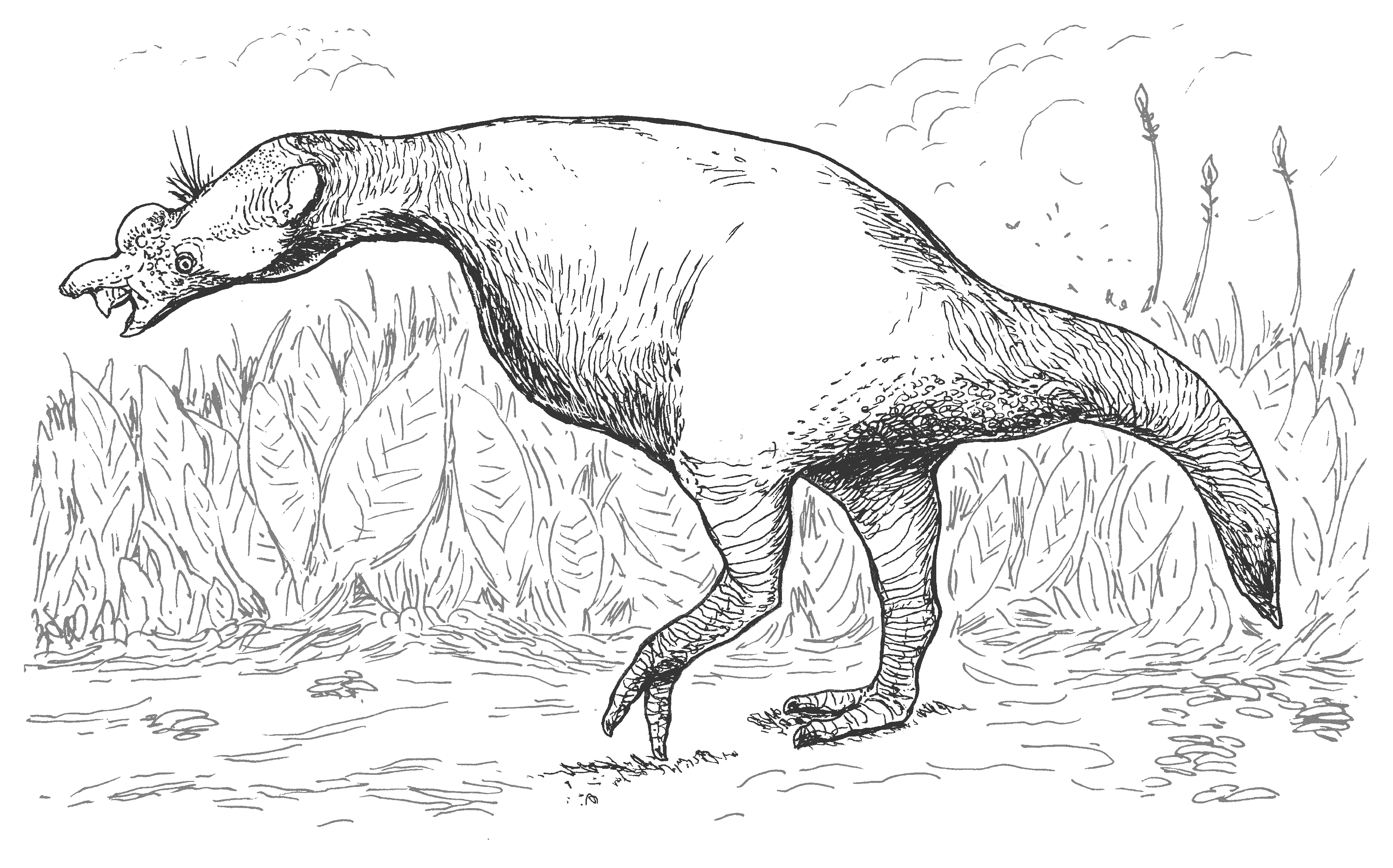
The main line of active, superficially bird-like parareptiles survived, and continued evolving into unique groups. One notable group was the bipedal, two-toed clade of sarcopsids, flesh-faced birds of a sort; roughly cat-sized diggers and generalist browsers. Members of this lineage evolved fleshy, mobile face muscles and external ears that independently recalled those of mammals. But there were no mammals on this world, not as we knew them.
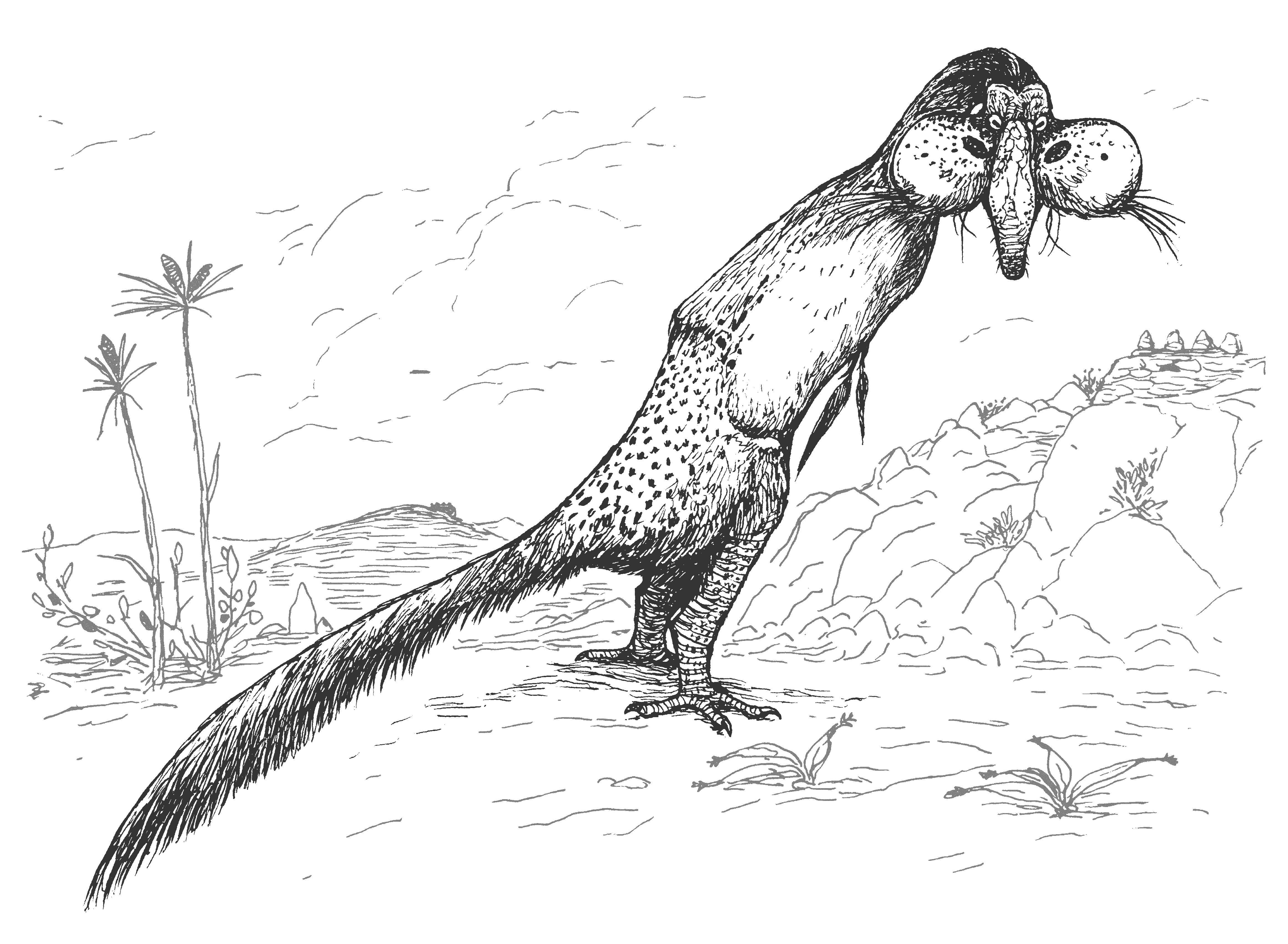

Together with the sarcopsids, superficially bird-and-dinosaur-like animals from the main parareptile line of evolution dominated the niches held by large mammals on our world. Their diversity was too expansive to cover in this brief article. Suffice it to say that many running predators, grazers; generalists and specialists roamed the world in their time. These quasi-dinosaurian forms were united by their warm-blooded metabolisms; erect gaits specialised for running, walking or bounding; and beaked faces that distantly recalled the heads of birds. Curiously, their forelimbs never specialised for flying or feeding as the dinosaurs’ forelimbs on our timeline, but hung aloft without apparent purpose, used only occasionally for social displays. The animal shown above, Anatodromaeus hoplovertebrum, a back-horned runner, was an omnivorous member of this quasi-dinosaurian group.
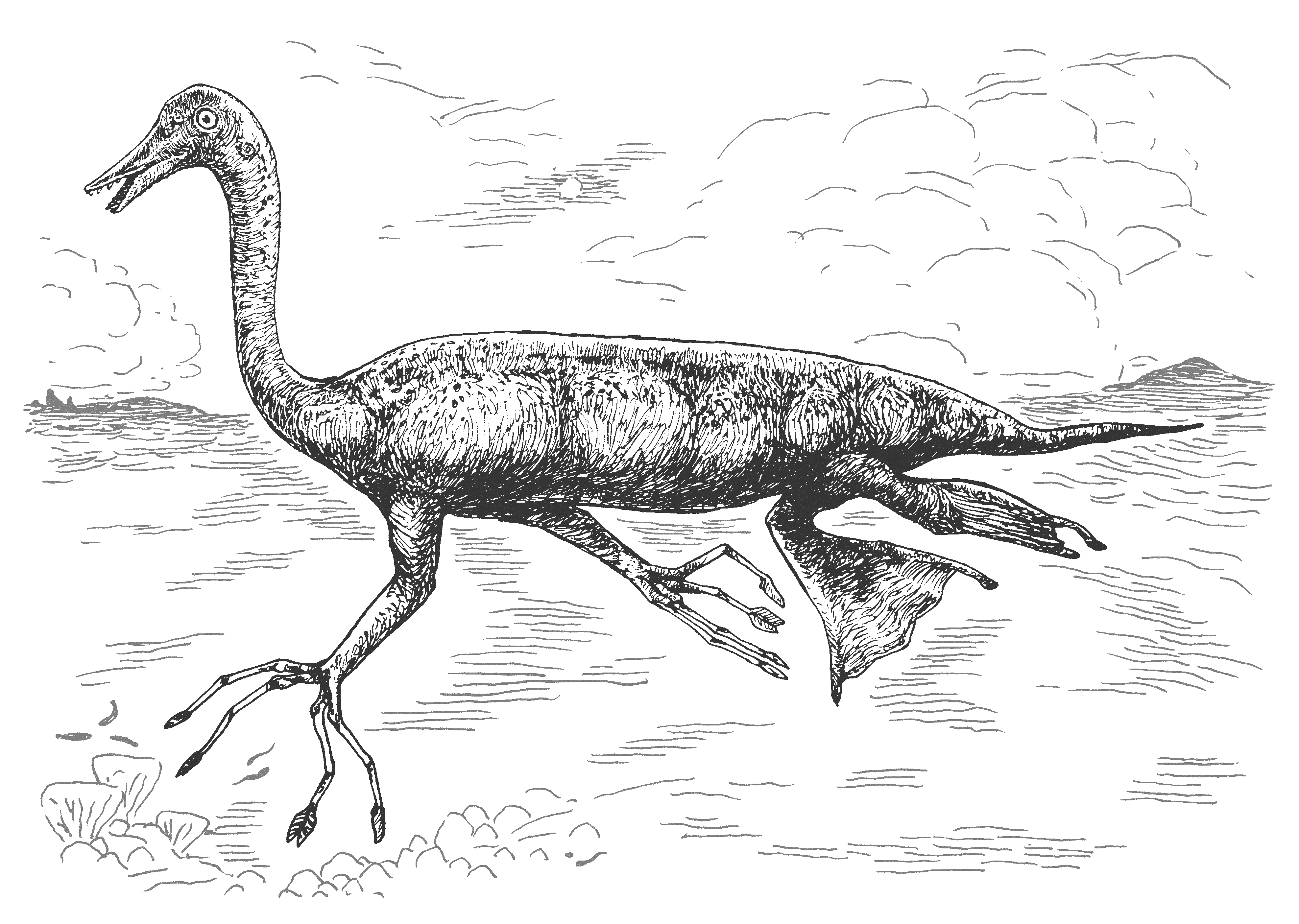
Yet the blind workings of evolution continued to generate wildly divergent forms. For a few tens of millions of years, seashores along what became the Indian Ocean on our world echoed with the screams of grab-birds, Pelagoprionidae sp.; surreal offshoots of the quasi-dinosaurian lineage. The bodies of these animals resembled a cross between swans and sea otters. A greasy pelage and a set of buoyant air sacs allowed them to float effortlessly on the waves. Powerful, kicking feet enabled them to swim and dive. The strangest surprise, however, lay in their forelimbs. Their arms, inert or regressed in many of their relatives, had developed extensively with sets of dextrous digits that resembled tweezers. Armed with this outlandish suite of adaptations, the grab-birds lived by diving in swallow waters, and catching small animals such as crabs, sea cucumbers, sea urchins, worms and nautiloids from the sea bottom, or from in-between rocks. They laid their eggs on beaches, and secluded rocks; later forms were also able to retain them in their bodies.
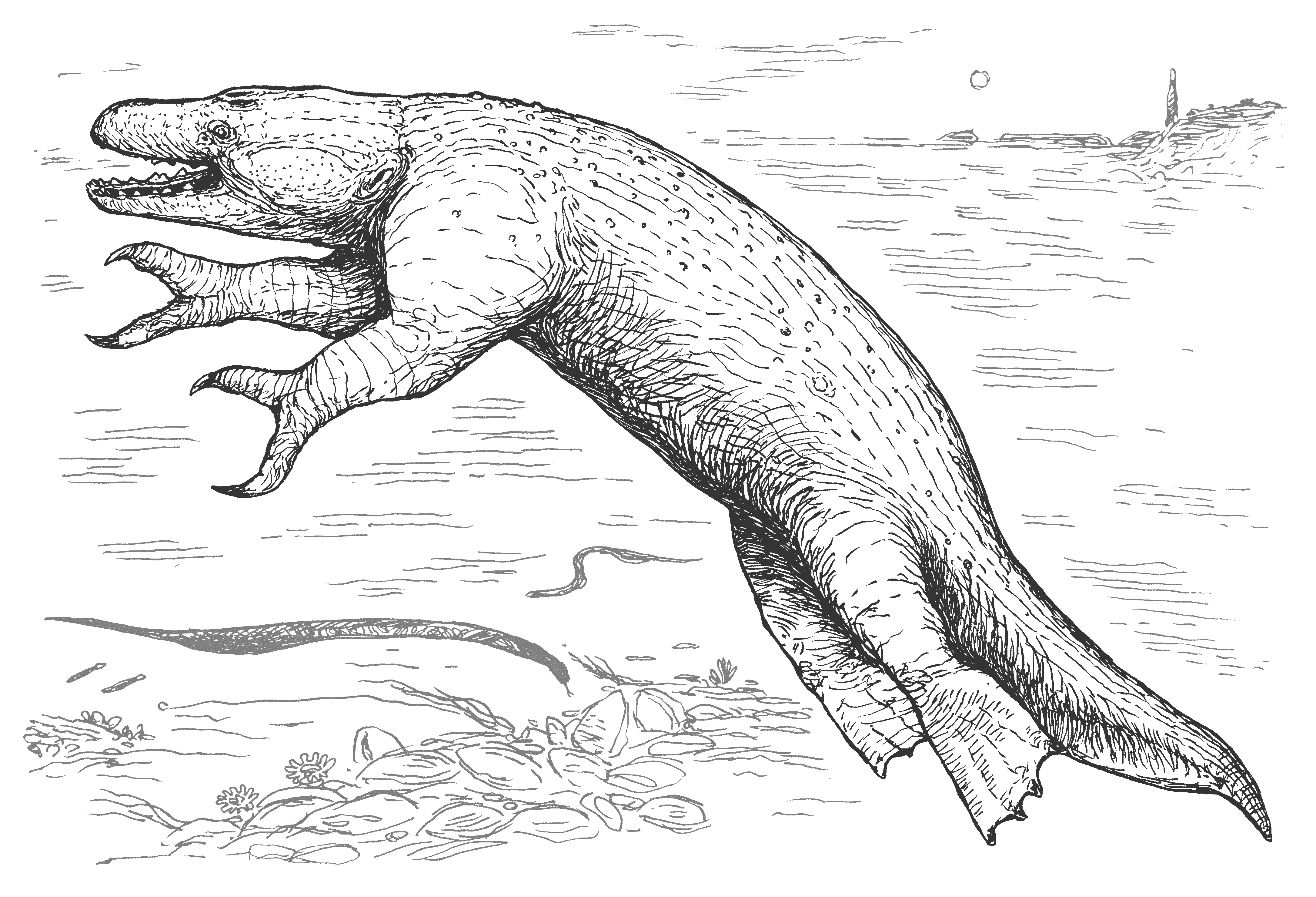

The grab-birds evolved into many raucous species and varieties. Some lost their hands and became large headed, toothy hunters. They lived by strangling giant, mollusc-eating snakes beneath the waves. Sometimes they also crossed paths with their distant cousins; things that resembled tusked, fish-like birds. Others evolved their hands further, and built elaborate dams, nests, and conical mounds of an unknown purpose. They built rafts, ventured into rivers, and fought battles amongst themselves, or against tribes of quarrelsome, crocodile-like creatures. Their songs grew in length and sophistication. They became intelligent and self-aware. If fate hadn’t intervened, they may have gone on to create an advanced civilisation…
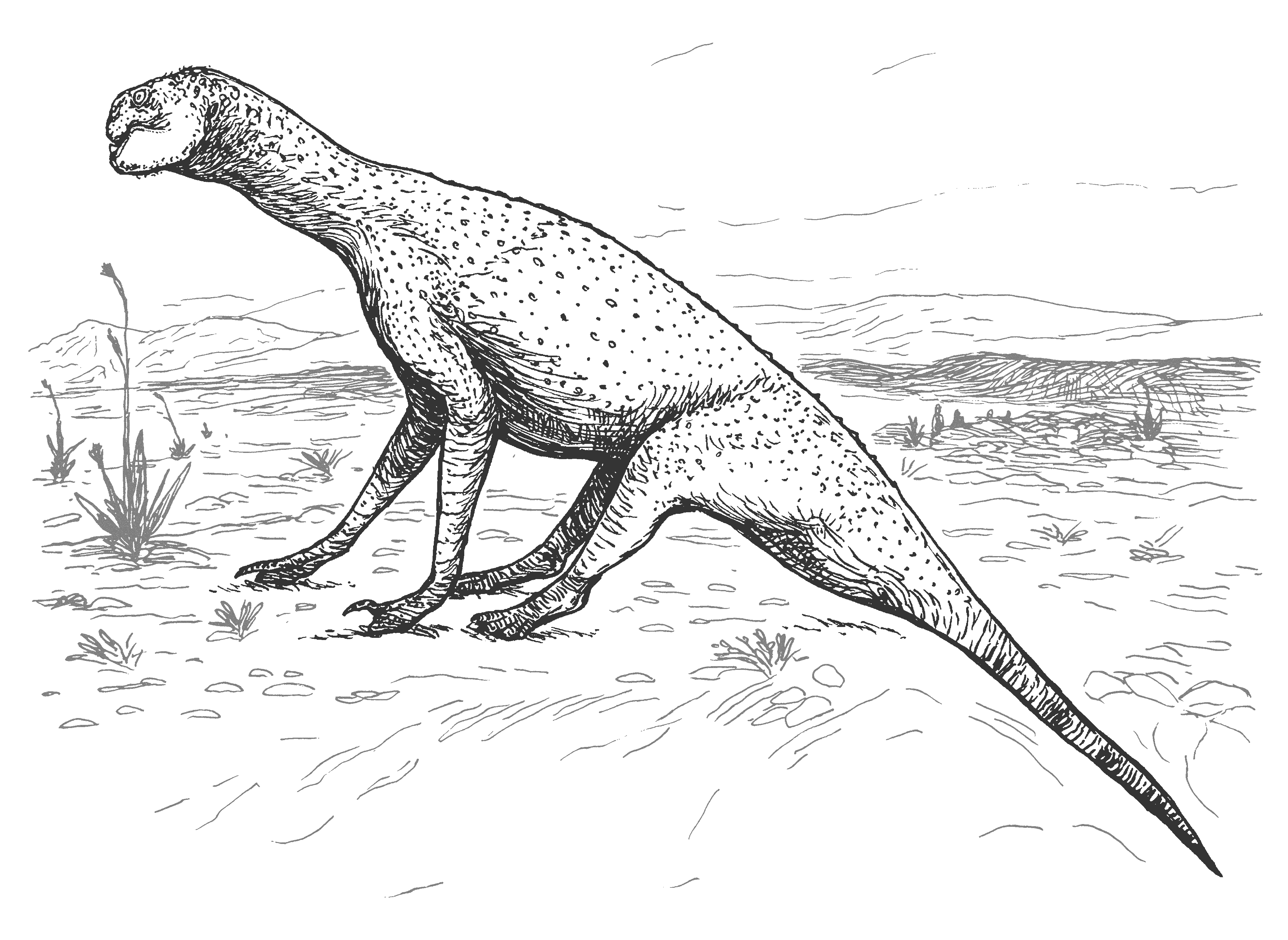
Yet this party, too, had to end. There was another extinction, comparable to, but different from, the one that killed off the dinosaurs on our world. Parareptiles survived, barely, as digging generalists with a distinct set of truncated forelimbs, bearing a reduced number of digits. Unlike the dinosaurs, however, these animals managed to stage a re-conquest of large-bodied animal niches on terrestrial ecosystems. These secondary parareptiles included erect-limbed, quadrupedal hunters such as the cat-lizards, Ailurosaurus sp. shown above. With powerful bites, shortened faces and forward facing eyes, their forms strangely echoed those of big cats living on our world, albeit with the unnerving, owl-like ability to turn their heads around their shoulders.
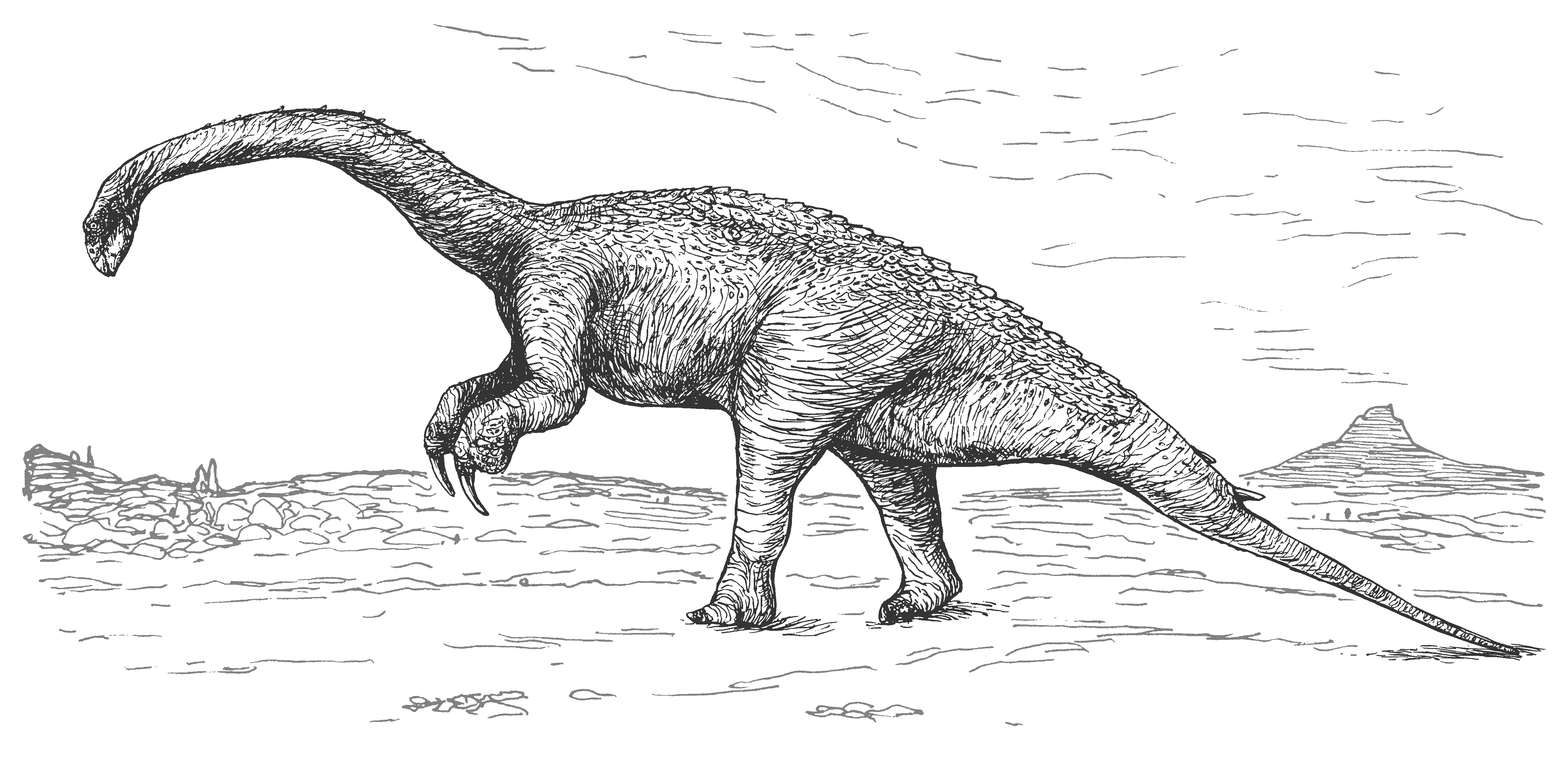
Their quarry was not as familiar. If anything, the hulking, tail-dragging, herbivorous cousins of cat-lizards looked more ancient than their ancestors. The hulking pseudosauropods, Barogressus sp., trod across forests, savannahs, plains and other habitats, using their single-clawed hands to bring down entire trees; stripping them clean of bark, branches and leaves. Life went on; the plants, hunters and the hunted following each other in their endless, diversifying cycles.
On another timeline, separated from ours by the flimsiest of barriers, all these beasts; large and small, strange and familiar; still flourish, live and die. Many such worlds exist, and all render themselves visible to the discerning mind. - 12.12.2017.
***
Copyright laws protect all content associated with this site.
Contact c.m.kosemen@gmail.com for inquiries.
***
